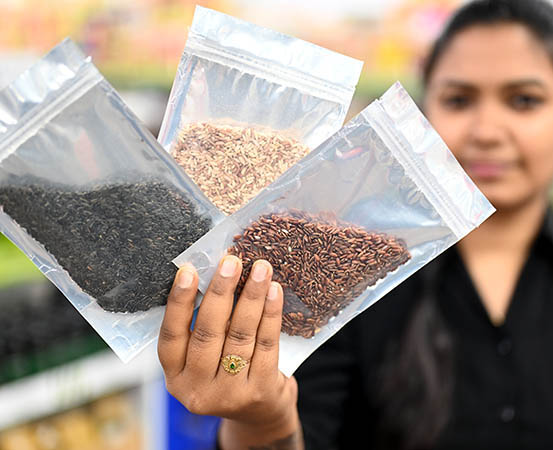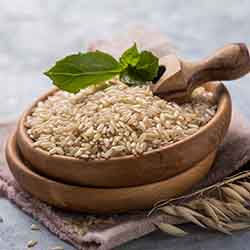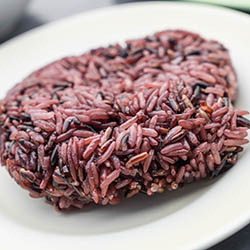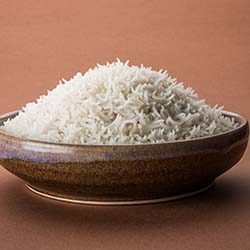
Rice, one of the world’s most essential grains, is an indispensable part of Indian meals. Besides being a rich source of essential nutrients, it offers an array of tastes and textures to satisfy various culinary preferences. However, certain varieties of white rice can cause sharp blood sugar spikes in people with diabetes. According to experts, those with diabetes should either avoid or consume white rice in extreme moderation. It is best for them to opt for diabetes-friendly rice varieties having a high fibre content.
Dr Belinda George, endocrinologist and associate professor, St John’s Medical College Hospital, Bengaluru, says while people with diabetes can have rice, they should exercise moderation by controlling the portion size.
In addition, the quantity of rice considered ‘safe for consumption’ would depend on the individual’s health, metabolic traits and blood glucose levels. “Those who are overweight can have rice once a day,” says Delhi-based clinical nutritionist Ishi Khosla. “It’s better to have rice for lunch rather than dinner, as it is better digested during the day,” she explains.
Besides being rich in fibre, some diabetes-friendly rice varieties also have a low glycemic index to prevent sudden blood sugar spikes. “However, even those varieties should be consumed in moderation to prevent adverse consequences. People should constantly check their blood sugar levels while choosing the right option for them,” says Delhi-based nutritionist Avni Kaul.
Diabetes-friendly rice varieties for managing blood sugar levels
According to experts, types of rice that can help maintain stable blood sugar levels include:
1. Brown rice
Brown rice, rich in vitamins, minerals and fibre, is ideal for people with diabetes. The inner layers (bran and germ layer) of the grain are responsible for its brown colour. It is ideal to soak the rice in water first, as it takes a long time to cook. Kaul says brown rice is also a good source of magnesium and selenium which prevent cell damage.

2. Red rice (matta rice)
Khosla says red rice, which is thick and coarse, has a high fibre content that helps slow down digestion and glucose absorption, promoting better glycemic control.
In addition, Kaul explains that red rice gets its vibrant colour from anthocyanins, which are antioxidants that have anti-inflammatory properties. “It also contains high amounts of iron and B vitamins,” she adds.

3. Wild rice
Wild rice is technically not a grain but a grass seed. It is highly nutritious and has high amounts of protein, fibre and essential minerals like magnesium and phosphorus. “The fibre content aids blood sugar regulation and promotes satiety,” says Kaul.

4. Wholegrain Basmati rice
Wholegrain basmati rice has a lower glycemic index compared to other varieties of white rice, meaning it doesn’t cause a sudden spike in blood sugar levels. As a result, it is often recommended for people with diabetes.

5. Black rice
People who aren’t very particular about taste can opt for black rice. “Not everyone finds it palatable due to its slightly nutty taste,” explains Khosla.
It also contains anthocyanins which prevent oxidative stress and cell damage. The nutritional value of black rice is higher than most other varieties.

6. Jasmine rice
“Jasmine rice is a type of aromatic rice that has a moderate glycemic index,” says Kaul. It can be a suitable alternative to white rice as it doesn’t cause rapid spikes in blood sugar levels.

7. Parboiled rice
Parboiled rice goes through a steaming process before milling, which helps retain some nutrients from the bran layer. It has a lower glycemic index and a better impact on blood sugar levels compared to regular white rice. Khosla says while basmati and parboiled rice are not rich in fibre, they have a low glycemic index which aids diabetes management.
Some rice varieties are low in fibre but high in resistant starch, and vice versa. “For instance, brown rice has a high fibre content but low resistant starch, while basmati and parboiled rice have high resistance starch, which works like a prebiotic, delaying the absorption of sugar,” explains Khosla.

Ways of consuming rice
Khosla suggests adding fibrous vegetables to the rice, which will help lower the glycemic index and keep one full. Healthy protein or fats (like ghee and butter) can be added to make one feel satiated, thereby preventing overeating.
She also recommends cooking and storing the rice in the fridge overnight and having it the next day. This way, the glycemic index becomes lower than the previous day, as the resistant starch increases if it’s kept longer in the fridge.
At the end of the day, nutrition plays an important role in diabetes management, and incorporating diabetes-friendly ingredients (like flours and fruits with high fibre content) into the diet can be vital in maintaining stable blood sugar levels.

















